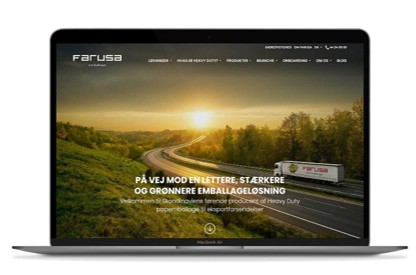And this is precisely where packaging plays a far bigger role than many companies realize. The right packaging solution can be the difference between smooth export operations and costly delays. Here are the 5 most common packaging mistakes we see in the export industry — along with our recommendations on how to avoid them.
X Mistake 1: Overpackaging — Wasting Space and Money
The problem: Many companies use standard boxes, either made from corrugated cardboard or plywood, that don’t fit the product properly. This leads to unnecessary filler, increased volume, and higher shipping costs.
The solution: Get customized packaging tailored to your product and transport method. With FARUSA’s Heavy Duty corrugated cardboard, we design solutions that maximize space utilization and minimize costs.
X Mistake 2: Lack of Stacking Strength — Damaged Goods
The problem: Packaging collapses under the weight of other goods during transit — especially in containers and on pallets.
The solution: Use robust packaging solutions with proven stacking strength.
Our HD corrugated cardboard is engineered to withstand rough handling, heavy stacking loads, and long transit times.
X Mistake 3: Unclear Labeling and Documentation
The problem: Missing or unclear labeling can cause customs errors, delays, and in the worst case, returns.
The solution: Ensure correct and visible labeling of contents, handling instructions, and origin. We assist in integrating this into the packaging—both graphically and structurally. (Special attention to hazardous goods!)
X Mistake 4: Wrong Material Choice for Climate and Route
The problem: Moisture, temperature fluctuations, and vibrations can damage packaging—and thus the contents—if the material is not suited to the transport conditions.
The solution: Choose packaging based on the actual conditions of the journey. Our specialized solutions withstand long sea voyages and high humidity without losing shape or strength.
X Mistake 5: Ignoring Local Regulations and Requirements
The problem: Some markets have specific requirements for packaging materials (e.g., ISPM15 for wood), labeling, or sustainability.
The solution: Use a supplier knowledgeable about export regulations. FARUSA advises on requirements in key export markets and ensures your goods arrive without customs issues or rejection.
📦 Packaging is not just a box –
it’s a crucial logistics component
When you consider packaging early in your export planning, you can:
Minimize damages and claims
Ensure faster and more efficient handling
Reduce shipping costs
Avoid delays in customs and distribution
🚛 Ready to optimize your export logistics?
At FARUSA, we develop packaging solutions that not only protect your product – but also support your export strategy.
Download our free export guide at farusa.dk and get inspired to take your packaging to the next level.
Enjoy!





